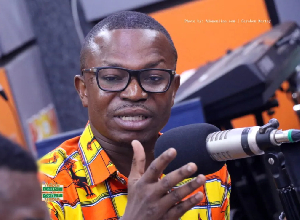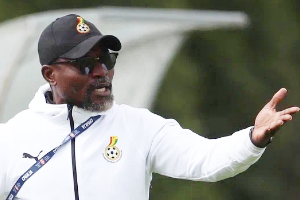Street Addressing system involves naming streets and then numbering the properties along them. It is therefore an exercise which makes it possible to locate a parcel, property, or direction to a place. Street naming is the most vivid way of identifying or easy way for drivers, citizens or tourists to get direction to new places in the country.
The Street Naming Exercise was a directive by the President of the Republic of Ghana, John Dramani Mahama to the Metropolitan, Municipal and District Assemblies (MMDA’s) to carry out the exercise within a period of 18 months, which would end on September 28, to facilitate service delivery.
Name selection for the various streets in the various ten regions in the country, however did pose many problems that lengthen the implementation process. Hence, proposed Street Names for some streets were in consultation with stakeholders including Chiefs, Assembly members, Sub-metro Chairmen and other policy makers in the community which helped facilitated the progression of the exercise.
Street naming exercise was a good initiative from the incumbent government to improve the navigation system which makes it easier for people to find their way around in cities or towns, to assist with the delivery of health, fire and security services in times of emergencies and to facilitate easy location of critical facilities in towns and cities.
In the past, people were finding it difficult in getting direction to new places especially in a visit to a different region in the country. Hence, most tourists in the country do rely on information from people to enable them get direction to the particular place they are visiting in the country. Most of these of difficulties resulted in most people losing their money and other properties to fake people who disguise themselves to aid for directions to places in the country.
The street naming exercise is indeed a good initiative; hence, it will curb all these difficulties and challenges that most people faced in the past and facilitate safe direction to places since the presence of the names can be easily identified.
However, most drivers have difficulty in patronizing the use of the street names to easily identify the destination of the passenger in the car. In other words, most of the drivers in return get the directions from the passenger in the car to the specific place. This baffles me to ask this question “What if it is the first time for the passenger to visit the place?”
Most people end up paying more money to drivers as a result of their little or no knowledge on some of the names of the streets in the country; thus, they spend the more time moving from place to another all in the name of locating the destination of the passenger.
Indeed, drivers must be educated more concerning the existence of the street names in the various regions of the country. There should be more public education to drivers and conductors (locally known as “mates”) at their stations on the street names and numbers in order to help ensure good direction to various places.
Moreover, non-governmental organisations (NGO’s), stakeholders and other private organisations should provide assistant to sponsor programmes that can help provide full detailed education of the street names to drivers upon which will help make their work simpler and avoid acquiring wrong information from people.
In addition, the Metropolitan, Municipal and District Assemblies (MMDA’s) can sponsor the provision or distribution of flyers with details of names or numbers of streets in a particular assembly to the Station Masters (SM) at the station in order to help them regularly update their drivers on the street names.
To me, the street naming exercise is very good initiative and must be patronized by all citizens to help reduce robbery and other deviant activities as a result of getting direction from unknown people in the society.
Opinions of Wednesday, 19 November 2014
Columnist: Dorcas Aba Annan


















